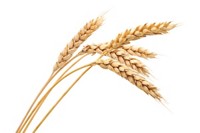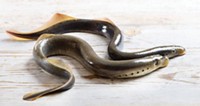Advertisement
Grab your lab coat. Let's get started
Welcome!
Welcome!
Create an account below to get 6 C&EN articles per month, receive newsletters and more - all free.
It seems this is your first time logging in online. Please enter the following information to continue.
As an ACS member you automatically get access to this site. All we need is few more details to create your reading experience.
Not you? Sign in with a different account.
Not you? Sign in with a different account.
ERROR 1
ERROR 1
ERROR 2
ERROR 2
ERROR 2
ERROR 2
ERROR 2
Password and Confirm password must match.
If you have an ACS member number, please enter it here so we can link this account to your membership. (optional)
ERROR 2
ACS values your privacy. By submitting your information, you are gaining access to C&EN and subscribing to our weekly newsletter. We use the information you provide to make your reading experience better, and we will never sell your data to third party members.
Biological Chemistry
Method Identifies Elusive Antigens
Immunochemistry: Synthetic peptoids ferret out protein targets of autoimmune diseases
by Stu Borman
January 8, 2015
| A version of this story appeared in
Volume 93, Issue 2

In autoimmune diseases, a person’s immune system goes awry, developing antibodies to attack native proteins rather than foreign invaders. A novel chemical approach now makes it easier to discover the so-called autoantibodies a person develops and the autoantigens they attack. The work could lead to better ways to diagnose and treat type 1 diabetes, multiple sclerosis, Crohn’s disease, and other autoimmune conditions, many of which remain poorly understood.
Key to diagnosing and treating autoimmunity is identifying the problematic autoantibodies and autoantigens. But this is difficult, and in many autoimmune conditions, they remain uncertain or unknown.
To find them, researchers typically obtain antibody-containing serum from healthy individuals and from afflicted patients. Then they screen the antibody-laden serum samples against protein arrays or tissue extracts containing various antigens and compare the results. With this approach, autoantibodies and autoantigens have to be pinpointed simultaneously, a challenging task.
Chemical biologist Thomas Kodadek and coworkers at Scripps Research Institute Florida have devised a strategy that simplifies the process by breaking it down into two parts: Find an autoantibody, and then use it as a fishing rod to reel in the corresponding autoantigen (ACS Chem. Biol. 2014, DOI: 10.1021/cb5007618).
The researchers first find an autoantibody by mixing blood serum with a library of millions of peptide mimics called peptoids. They identify a disease-specific autoantibody in the mixture by observing its tendency to bind avidly to a peptoid that is a good surrogate for the antibody’s autoantigen target. This interaction occurs with autoimmune serum but not normal serum. They then purify the autoantibody, use it to fish its autoantigen partner in crime out of tissue extracts, and characterize the antigen by tandem mass spectrometry. The researchers demonstrated the approach by using it to identify the autoantigen GAD65 in nonobese diabetic mice, a task never before achieved.
According to Steinunn Baekkeskov of the University of California, San Francisco, the ability to identify GAD65 as a target of circulating autoantibodies in this type of mouse “is no small feat. The sensitivity of the technique seems to be superior to that of earlier methods.” Baekkeskov’s group previously identified GAD65 as a diabetes autoantigen in people (Nature 1990, DOI: 10.1038/347151a0).
“The technique is extremely powerful,” adds David A. Spiegel of Yale University, whose group recently synthesized small molecules that act like antibodies. “Extending the concept all the way from antigen-surrogate discovery to antigen discovery is a major advance.”
Kodadek notes that peptoids are not actually the best antigen surrogates because they are floppy and bind antibodies with low affinity. “We are developing libraries of far more conformationally constrained molecules that bind antibodies much better than peptoids,” he says. “These should make this entire process more efficient.”





Join the conversation
Contact the reporter
Submit a Letter to the Editor for publication
Engage with us on Twitter